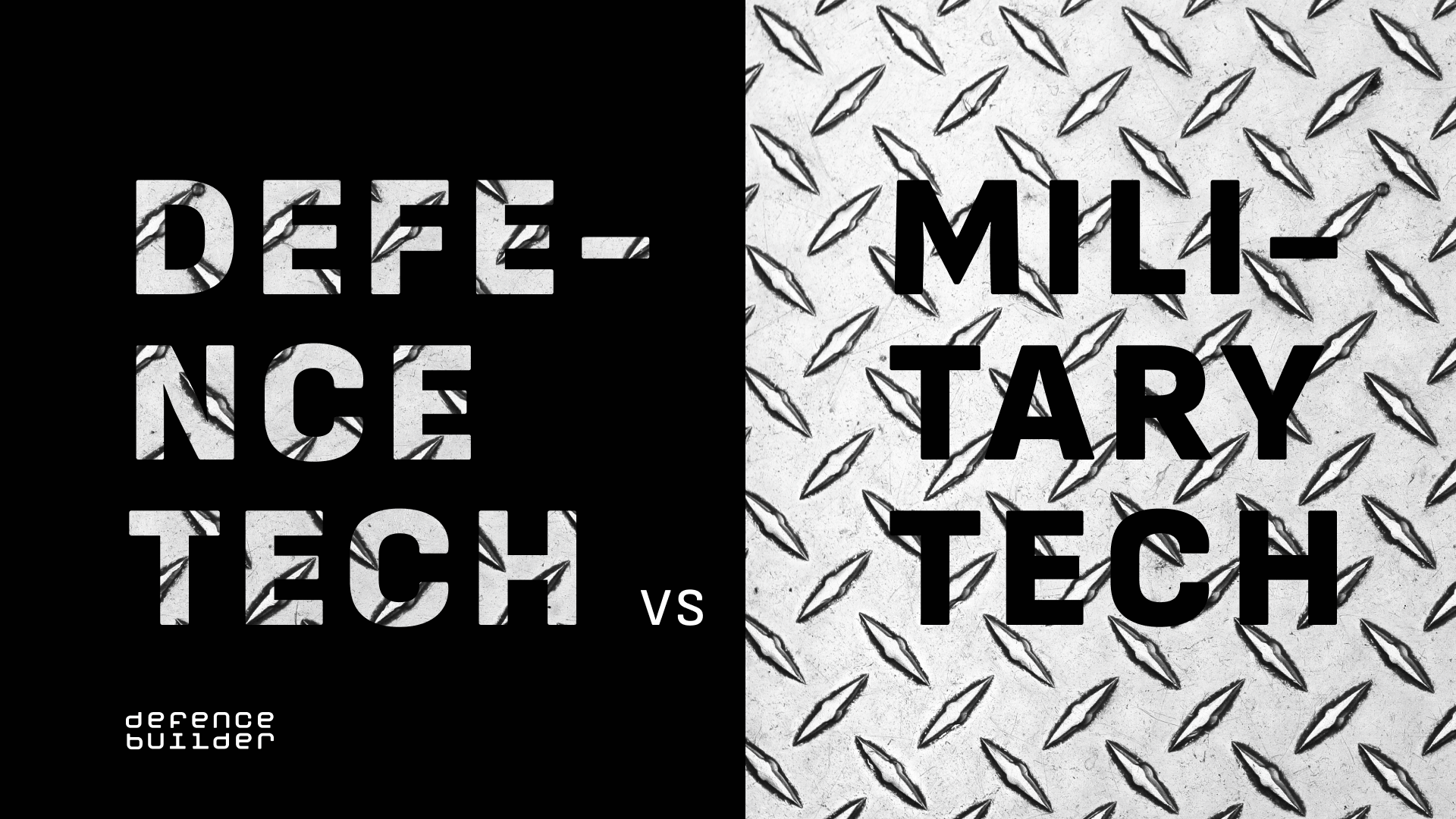Defence-tech and mil-tech are two widespread terms that became common for both defence sector stakeholders and the wider audience in Ukraine during the years of the full-scale war. Normally, one of these concepts is used to describe, in general terms, the community of producers, engineers, scientists, and startups, as well as the developments and technological solutions, designed for the military.
However, would it be correct to equate one with another? Although it may seem not so noticeable at first glance, the difference between the two terms does exist. Kateryna Kistol, Analyst at Defence Builder Accelerator, explains the difference.
Let’s start with the definition of defence-tech, or defence technologies. First of all, it is all about the defence industry itself and related processes such as production and scaling, R&D, procurement, systems launch, adoption into service, etc. Overall, the existence of processes and their continuity can be named the key features of defence-tech. For instance, when talking on the development of a product or technology, and later on, their integration into the ecosystem, — it is defence-tech we are dealing with.
Let’s start with the definition of defence-tech, or defence technologies. First of all, it is all about the defence industry itself and related processes such as production and scaling, R&D, procurement, systems launch, adoption into service, etc. Overall, the existence of processes and their continuity can be named the key features of defence-tech. For instance, when talking on the development of a product or technology, and later on, their integration into the ecosystem, — it is defence-tech we are dealing with.
More clearly the continuity of processes can be demonstrated using the example of a reconnaissance UAV on its way to becoming a unit within the ecosystem. Firstly, it all should start from the capabilities that have to be realised on the battlefield. Next, in an ideal world, the developers team sets the task to “decompose” those capabilities into particular solutions with specific tactical and technical characteristics. As a result, the team delivers tactical and technical product requirements, leading to a prototype’s creation. Also, the team should apply comparative analysis to evaluate the pros and cons of the prototype in comparison with similar products within the category — those that implement similar capabilities on the battlefield. Besides, the team should set up a roadmap, while working towards the attraction of resources.

When the prototype is ready for trials, it proceeds to field testing, and after that — to “combat” testing. Afterwards, the developers prepare technical documentation, before entering the processes of product codification and certification, as well as collecting feedback from end-users, that is, the military. All the processes roughly described above should be seen as an integral part of defence-tech.
In a wider context of defence-tech, the purpose of technological solutions development is their practical transformation into capabilities. In turn, capabilities are meant to be embodied in the framework of the general combined-arms plan. Nevertheless, in defence-tech, some inventions get “militarised” when arriving in defence from civilian area. This, should be said, is quite a rare case though.
Now, let’s analyse the definition of mil-tech or military technology. This term has a narrower meaning, as it includes, primarily, military and special equipment, as well as weapons that may be used for military purposes alone. One may speak of mil-tech as of the “[…]range of weapons, equipment, structures, and vehicles used specifically for the purpose of warfare” which also refers to “[…]the knowledge required to construct such technology, to employ it in combat, and to repair and replenish it.” John F. Guilmartin).
Unlike defence-tech, mil-tech is about creating samples of military weapons of certain categories, i.e. in the field of rocket science, — rather than working on the ecosystem’s build-up. In the mil-tech dimension, weapons systems are normally made and launched in line with the state’s national interests and implementation of defence policies. Respectively, state defence companies, design bureaus, and their foreign counterparts shall be considered the typical stakeholders of the mil-tech realm. By contrast, in defence-tech, technological solutions are created and developed in the context of the market and its constant and dynamic competition (at least, among the actors of a given category of products).
Finally, the impossibility of applying mil-tech products in the civilian area can be assumed as another feature of mil-tech. By comparison, in the framework of defence-tech, one can easily imagine a multicopter type cargo drone, used both on the battlefield — for attack operations or delivery of various kinds of cargo to the friendly units, — as well as in rescue operations, not in a conflict zone. Instead, mil-tech production is originally designed and constructed entirely for warfare purposes.